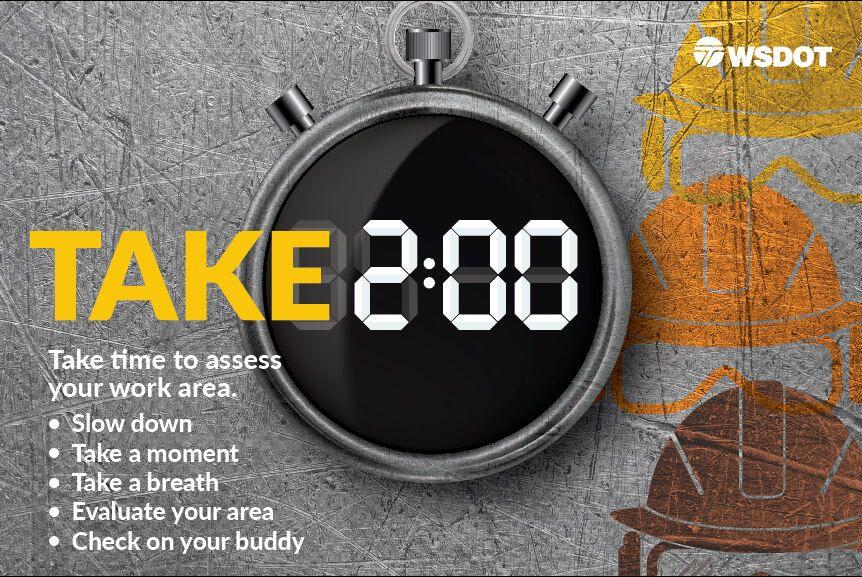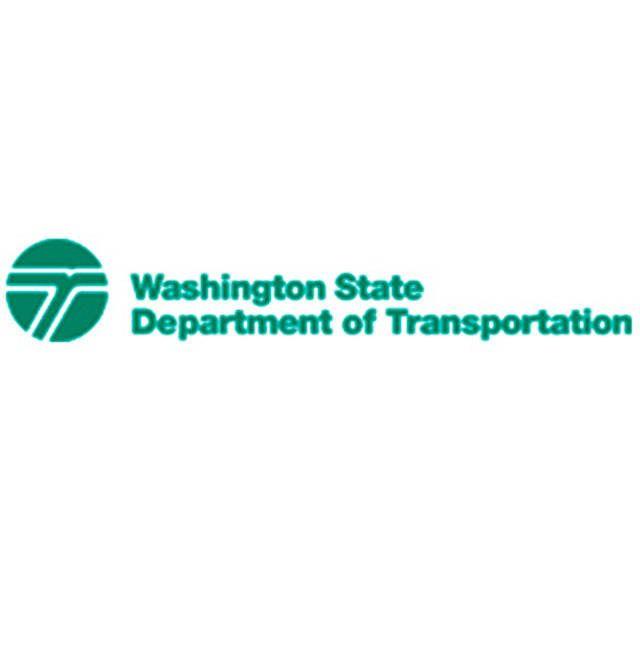Washington State Department Of Transportation: Enhancing Mobility And Connectivity
In Washington State, the Washington State Department of Transportation (WSDOT) serves as the cornerstone of the state's transportation network. As a leading government agency, WSDOT oversees and maintains the vast infrastructure that supports safe and efficient travel for both residents and visitors. From highways and bridges to ferries and airports, WSDOT ensures seamless mobility across the region.
Transportation infrastructure plays a crucial role in fostering economic growth and enhancing the quality of life in any region. Recognizing its importance, WSDOT is dedicated to delivering exceptional transportation services. By managing road maintenance, ferry operations, and airport development, the department ensures that Washington's infrastructure remains robust, reliable, and future-ready.
This comprehensive guide aims to provide an in-depth exploration of WSDOT, delving into its responsibilities, services, and impact on the community. Whether you are a resident, traveler, or someone interested in transportation policy, this resource will serve as your ultimate guide to understanding how WSDOT shapes Washington's transportation landscape.
Read also:Discover The Transformative Experience At Mount St Marys University
Contents Overview
- Understanding WSDOT
- The Evolution of WSDOT
- Organizational Framework of WSDOT
- WSDOT's Highway Management
- Navigating Ferry Services with WSDOT
- Aviation and Airports Under WSDOT
- Rail and Public Transportation Initiatives
- Environmental Sustainability in WSDOT Projects
- Funding and Budget Allocation
- Innovative Plans and Future Projects
- Final Thoughts
Understanding WSDOT
The Washington State Department of Transportation (WSDOT) is the state's primary agency responsible for overseeing the development, maintenance, and operation of transportation infrastructure. This includes highways, bridges, ferries, airports, and rail systems. WSDOT plays a pivotal role in ensuring safe, efficient, and accessible travel for everyone in the state.
With a mission to foster economic vitality, enhance quality of life, and ensure safety for all users, WSDOT employs thousands of professionals across various disciplines. From engineers and planners to maintenance workers, the team collaborates to deliver on its commitments. Among its key responsibilities is maintaining the state's extensive highway network, which spans over 20,000 lane miles, and operating the largest ferry system in the United States.
The Evolution of WSDOT
The origins of WSDOT trace back to the early 20th century when the state recognized the need for a centralized authority to manage transportation infrastructure. In 1905, the Washington State Highway Commission was established, marking the beginning of state-led efforts in road construction and maintenance.
As transportation needs expanded, the Washington State Department of Highways was created in 1923. Initially focused on highway development, the department gradually incorporated other modes of transportation into its portfolio. In 1991, it was renamed the Washington State Department of Transportation (WSDOT) to reflect its broader mandate. Throughout its history, WSDOT has been a pioneer in transportation innovation, from constructing iconic landmarks like the Tacoma Narrows Bridge to implementing cutting-edge traffic management systems.
Organizational Framework of WSDOT
Key Divisions within WSDOT
WSDOT is structured into several specialized divisions, each focusing on distinct aspects of transportation management:
- Highway Operations Division: Manages the maintenance and operation of the state's highway system.
- Ferry System Division: Oversees the largest ferry system in the U.S., ensuring reliable and efficient service.
- Aviation Division: Supervises airports and promotes aviation development across the state.
- Rail and Public Transportation Division: Focuses on rail systems and public transit services to enhance mobility.
- Planning and Modal Development Division: Develops long-term strategies and transportation plans.
This organizational structure allows WSDOT to leverage specialized expertise while maintaining a cohesive approach to transportation management. Each division plays a critical role in achieving the department's overarching goals.
Read also:Max Muncy A Rising Star In Major League Baseball
WSDOT's Highway Management
Managing highways is one of WSDOT's core responsibilities. The department oversees more than 20,000 lane miles of highways, ensuring they remain safe and accessible for all users. This involves routine maintenance activities such as pavement repairs, bridge inspections, and traffic signal management.
WSDOT also undertakes significant infrastructure projects to enhance highway capacity and safety. For instance, the SR 520 Bridge Replacement and HOV Program addressed congestion and safety concerns on one of the state's busiest corridors. To further improve highway operations, WSDOT employs advanced technologies like Intelligent Transportation Systems (ITS). These systems enable real-time monitoring of traffic conditions, facilitating prompt responses to incidents and congestion, while providing valuable data for long-term planning.
Navigating Ferry Services with WSDOT
Washington State Ferries: A Critical Transportation Link
Washington State Ferries (WSF), operated by WSDOT, is the largest ferry system in the United States. It provides essential transportation services to communities across Puget Sound, connecting cities such as Seattle, Bainbridge Island, and Bremerton. In 2022, the ferry system transported over 22 million passengers and 9 million vehicles, underscoring its significance as a vital transportation link for residents and tourists alike.
To meet the growing demand, WSDOT has invested in modernizing the fleet and improving terminal infrastructure. Recent projects include the introduction of new hybrid-electric ferries, which reduce emissions and operating costs while maintaining reliability and capacity. These advancements ensure that WSF continues to serve communities effectively and sustainably.
Aviation and Airports Under WSDOT
The Aviation Division of WSDOT oversees the state's network of 165 public-use airports, ranging from small rural airstrips to major international hubs like Seattle-Tacoma International Airport (Sea-Tac). The division promotes aviation development and safety through grants for infrastructure improvements, resources for aviation education, and collaboration with federal agencies to ensure compliance with safety regulations.
Sea-Tac Airport, managed in partnership with the Port of Seattle, is a major economic driver for the region. With millions of passengers passing through its terminals annually, the airport supports thousands of jobs and generates billions in economic activity. WSDOT plays a key role in ensuring the airport's continued success and growth.
Rail and Public Transportation Initiatives
Rail and public transportation are integral to WSDOT's mission. The department oversees intercity rail services like Amtrak Cascades, which connects cities in Washington, Oregon, and British Columbia. These services offer an environmentally friendly alternative to road travel and contribute to regional economic development.
WSDOT collaborates closely with local transit agencies to enhance public transportation options. This includes funding and planning for bus rapid transit (BRT) systems, light rail expansions, and other transit projects. By improving public transportation infrastructure, WSDOT aims to reduce congestion, improve air quality, and increase mobility for all residents.
Environmental Sustainability in WSDOT Projects
WSDOT is committed to environmental stewardship in all its projects. The department adheres to strict environmental regulations and employs innovative practices to minimize the impact of transportation infrastructure on natural resources. For example, green technologies are incorporated into highway construction, including the use of recycled materials in pavement mixes and energy-efficient lighting systems on bridges and overpasses.
Addressing climate change is a priority for transportation planners, and WSDOT is actively exploring strategies to reduce greenhouse gas emissions. These include the adoption of alternative fuels, development of electric vehicle infrastructure, and implementation of habitat restoration projects to offset the effects of infrastructure development on local ecosystems.
Funding and Budget Allocation
WSDOT's operations and projects are funded through a combination of state, federal, and local sources. The majority of the department's budget comes from transportation revenue, including gas taxes, vehicle registration fees, and other fees. However, declining gas tax revenues and rising infrastructure costs have presented budgetary challenges. To address these, WSDOT has implemented cost-saving measures and sought additional funding sources, such as public-private partnerships and federal grants.
Transparency in budgeting is a core value for WSDOT. The department provides detailed reports on its financial activities, ensuring accountability and fostering public trust. These reports are accessible on WSDOT's website, allowing stakeholders to track how funds are allocated and spent.
Innovative Plans and Future Projects
WSDOT has ambitious plans to enhance transportation infrastructure and services in Washington State. One major initiative focuses on expanding public transportation options, including light rail and BRT systems, to alleviate congestion and improve mobility. The department is also committed to modernizing the ferry system by adding more hybrid-electric ferries and upgrading terminal facilities for greater efficiency and reliability.
Technology will play a transformative role in shaping the future of transportation in Washington. WSDOT is exploring the integration of autonomous vehicles, smart highways, and other cutting-edge innovations to enhance safety, efficiency, and sustainability. By embracing new technologies, WSDOT aims to create a transportation system that meets the evolving demands of the 21st century.
Final Thoughts
The Washington State Department of Transportation (WSDOT) is a cornerstone of the state's transportation infrastructure. Through its management of highways, bridges, ferries, airports, and rail systems, WSDOT ensures that Washington's transportation network remains safe, efficient, and reliable for all users.
This guide has provided a comprehensive exploration of WSDOT's responsibilities, services, and impact on the community. By understanding the department's role and initiatives, residents and stakeholders can appreciate the significance of transportation in shaping the state's economic and social landscape. We encourage you to explore WSDOT's website for more information on its programs and projects. Your feedback and engagement are invaluable in helping WSDOT continue to enhance transportation services in Washington State.


